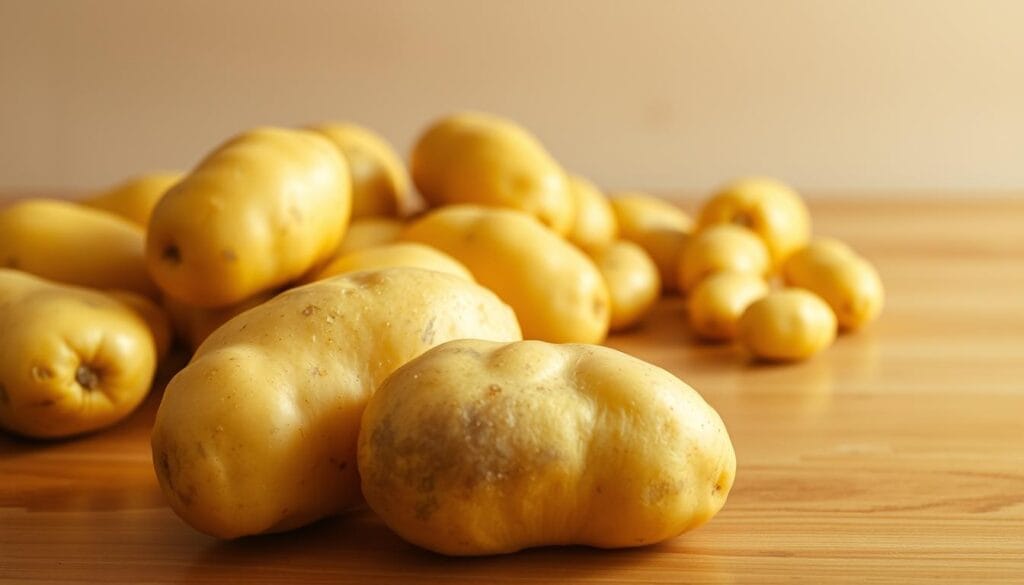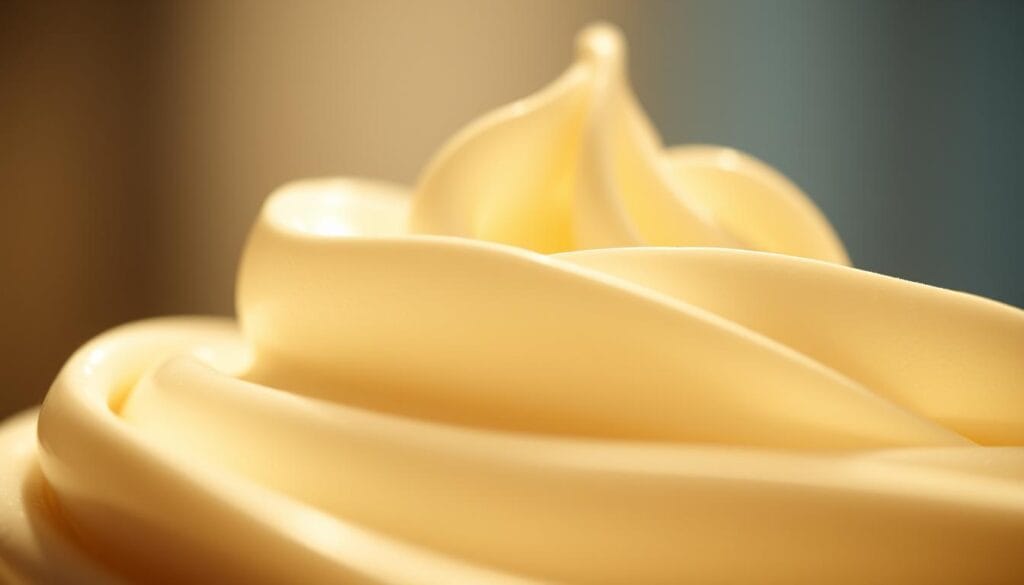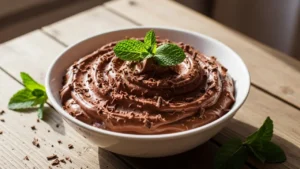You know that warm, familiar tug when a simple side brings everyone to the table. This recipe is built to deliver that feeling every time. You’ll get a reliable guide that balances buttery richness and airy texture for an unbeatable side.
Choose Russet or Idaho for fluff, Yukon Gold for natural butteriness, or mix them to boost flavor and mouthfeel. Start your tubers in cold water, bring to a gentle boil, and cook until fork-tender—about 15–20 minutes depending on size.
Drain well and let the pan sit so excess steam escapes. Warm whole milk or cream and melt the butter before you add them; this keeps the mash hot and helps absorption. Mash by hand to guard texture and avoid gluey results.
Serve with a pool of butter, chives, and rich gravy, or pair with turkey for Thanksgiving. You’ll also learn make-ahead and reheating tips so your dish tastes fresh, even after you save time.

Fluffy Buttery Mashed Potatoes
Equipment
- large pot
- potato masher or ricer
- mixing spoon or spatula
- colander
- serving bowl
- saucepan (to heat milk and cream)
Ingredients
- 2 lb Russet potatoes, peeled and chopped
- 2 lb Yukon Gold potatoes, peeled and chopped
- 1 tbsp kosher salt, plus more to taste
- 4 cloves garlic (optional), peeled
- 8 tbsp unsalted butter, melted (plus more for topping)
- 1 cup whole milk, warmed
- 0.5 cup heavy cream, warmed
- 0.25 cup sour cream (optional)
- 0.5 tsp freshly ground black pepper, or to taste
- 2 tbsp chopped chives, for garnish (optional)
Instructions
- Peel and chop the potatoes into uniform chunks. Add them and garlic cloves (if using) to a large pot and cover with cold water by 1 inch.
- Add salt and bring to a boil. Reduce heat and simmer for 15–20 minutes until fork-tender. Drain well and return to the warm pot to let steam escape.
- Using a potato masher or ricer, mash the hot potatoes and garlic until mostly smooth.
- Gradually stir in melted butter, then add warm milk and cream in small amounts until desired consistency is reached.
- Stir in sour cream (if using), season with salt and pepper, and taste. Adjust seasoning and texture as needed.
- Transfer to serving bowl, top with extra butter and chopped chives. Serve warm with gravy if desired.
Notes
Nutrition
Table of Contents
Why You’ll Love These Fluffy, Buttery Potatoes Right Now
Imagine a bowl that balances rich butter with an airy texture so each bite melts without heaviness.
These mashed potatoes are rich and creamy thanks to warmed whole milk or cream and plenty of butter. Add a spoon of sour cream if you want a tangy lift that complements the buttery notes.
Start the tubers in cold water and bring them to a gentle boil. This simple step prevents undercooked centers and keeps lumps out of the final mash.
Hand-mashing with a ricer or masher preserves the cloud-like texture. Be careful not to overwork the mix — too much mixing makes the starch gummy and heavy.
- You get ultra-creamy mouthfeel with straightforward technique.
- Classic salt and pepper let natural potato flavor shine.
- Dress them up for Thanksgiving with gravy and chives, or keep them simple for a weeknight side.
Bottom line: this method gives reliable, repeatable results so your family always gets a cozy, restaurant-quality side.
Mashed Potatoes
Pick a high-starch variety or a naturally creamy one to shape the mash’s final texture.
The best potatoes for texture: Russet vs. Yukon Gold (or a mix)
You can choose russet for maximum fluff or yukon gold for a naturally buttery mouthfeel.
A 50/50 mix is a favorite because it balances lightness and rich flavor in every bite.

Butter, whole milk, and cream: the rich trio for perfect mash
Heat your dairy first. Melted butter, warmed whole milk, and warm cream help the tubers absorb moisture fast and stay hot.
Use real butter and add the milk and cream gradually so the texture stays velvety without becoming gluey.
Simple seasonings that pop: salt, pepper, and optional garlic
Keep seasoning basic to let the potato flavor shine: salt and cracked black pepper do the job.
For gentle savoriness, simmer whole garlic cloves with the potatoes and fold in chopped chives with the butter at the end.
| Choice | Texture | Best use |
|---|---|---|
| Russet (Idaho) | High-starch, fluffy | Light, airy mash |
| Yukon Gold potatoes | Natural creaminess, buttery | Silky, rich mash |
| 50/50 mix | Balanced fluff and flavor | Everyday, reliable side |
Quick tip: scale your ingredients and keep the dairy warm so the mash absorbs smoothly and stays ready to serve.
Step-by-Step: How to Make Mashed Potatoes That Are Always Perfect
Follow a clear sequence and you’ll avoid common texture problems. Work in small, steady steps so every piece cooks the same and the final dish stays light.

Peel and cut evenly for consistent cooking
Peel and cut potatoes into uniform chunks so they finish in the same time. Place the pieces and optional garlic in cold water, covering by about 1 inch.
Start in cold water and bring to a boil
Use a large pot and season the water with salt. Bring to a boil, then gently boil potatoes for 15–20 minutes until a fork slides in easily.
Mash by hand and add warm dairy gradually
Drain thoroughly, shake off excess water, and return the pieces to the warm pot to steam dry. Partially mash with a masher, then add melted butter and warmed milk slowly while mashing.
Adjust consistency and flavor
Season with salt and pepper, tasting as you go. Fold in a spoonful of sour cream for tang if you like, and add small splashes of warm milk to loosen the mix to your preferred smoothness.
- Peel, cut, and cover in cold water.
- Boil in a large pot 15–20 minutes.
- Drain, mash by hand using potato masher, and finish with warm butter and milk.
Pro Tips for Creamy, Cloud-Like Texture
Control heat and moisture and the rest follows. A few simple moves after boiling determine if your dish is glossy and airy or dense and gummy.
Drain fully and return the hot pieces to the warm pot for a minute so steam can escape. This evaporates excess water and prevents a watery result.

Heat dairy, add butter, then go slowly
Warm your cream and milk before adding them. Pour in melted butter with the warmed dairy so the tubers stay hot and absorb liquid better.
Use a masher or ricer — not a heavy mixer
Mash by hand with a masher or run through a ricer for the silkiest texture. A mixer or food processor can overwork starch and make the mix gummy.
- Drain and steam in the warm pot to avoid watery texture.
- Add warmed cream or milk plus melted butter for better absorption.
- Mash by hand or use a ricer to stay in control of consistency.
- Season gradually and taste as you go to balance flavor.
| Step | Why it matters | Quick action |
|---|---|---|
| Drain & dry in pot | Removes excess water that thins texture | Let sit 1–2 minutes on low heat |
| Warm cream/milk & melt butter | Keeps temperature steady for absorption | Heat gently on stovetop before adding |
| Masher/ricer, not mixer | Prevents starch overworking and gumminess | Mash gradually, check texture over time |
Tools You’ll Use for the Best Results
Choosing the right equipment makes the difference between a rustic side and a silky, restaurant-style finish. The tools below help you control texture, temperature, and final flavor from boil to serve.
Potato masher vs. ricer vs. mixer: which to choose and why
Potato masher: You’ll reach for a potato masher when you want speed, control, and a classic, slightly rustic texture. Mashing by hand helps you stop at the perfect point of creaminess and avoid overworked starch.
Ricer: Use a ricer for the smoothest, lump-free finish. Pressing cooked tubers through tiny holes gives an ultra-silky result that mimics restaurant-style mashed potato without gluey texture.
Mixer: A mixer can speed things up, but use it sparingly and briefly. Overmixing with a stand or hand mixer will activate starch and make the mix gummy.
Pot and heat control: Pick a large, sturdy pot so pieces cook evenly and drain easily. Return the hot pieces to the warm pot briefly to steam off excess moisture before mashing.
- You’ll get consistent results using a masher and adding warm dairy gradually.
- Choose your tool based on the finish you want — rustic, silky, or in between.
- Using potato masher techniques preserves texture while keeping the process hand-driven and reliable.
Flavor Variations & Mix-Ins You’ll Crave
A few smart mix-ins bring new life and bold flavor to your basic recipe. Start with gentle additions and taste as you go so the base stays balanced.
Garlic and herbs: stir in roasted garlic or simmer whole cloves with the potato for mellow depth. Fold chopped chives, thyme, or parsley at the end for a fresh lift.
Cheese and loaded options
Add sharp cheddar, nutty Parmesan, or creamy gouda for richness. For loaded results, mix in crispy bacon bits and sliced green onions, then top with an extra pat of butter and chives.
Lighter swaps and finishing touches
Replace some butter with sour cream to add tang and silkiness, or use Greek yogurt to lighten while keeping creaminess. Thin gently with warm chicken broth when you want a savory, lower-dairy option.
- You’ll build savory depth with garlic—roasted or simmered for subtle warmth.
- You’ll transform texture and flavor with cheddar, Parmesan, or gouda.
- You’ll go all-in on loaded variations with bacon bits, green onions, and a butter or chive finish on top.
- You’ll add sour cream for tang or use Greek yogurt to keep it lighter yet creamy.
| Add-in | Effect | Best use |
|---|---|---|
| Roasted garlic | Mellow, sweet garlic flavor | Fold in for subtle depth |
| Cheddar / Parmesan / Gouda | Rich, savory creaminess | Mix while warm for smooth melt |
| Bacon & green onions | Crunch, smokiness, brightness | Loaded style, garnish on top |
| Sour cream / Greek yogurt | Tang and creaminess; lighter option | Swap some butter or milk for texture |
| Warm chicken broth | Thins without extra dairy | Use sparingly to adjust consistency |
Finish with salt and pepper to taste. Small, thoughtful additions let the potato base shine while adding the flavor and texture you crave.
Make-Ahead, Reheating, and Leftover Storage
Plan your make-ahead routine so the side holds texture and stays creamy through service.
Cool completely and transfer to an airtight container. Chill in the refrigerator until ready. Store in one container for a family meal or portion into smaller containers for quick reheating.
Make ahead and hold
Spread the cooled mash into a greased casserole, dot with butter, cover, and bake at 325–350°F. Depending on depth, allow about 25–40 minutes so the center warms through.
Reheat options
In the microwave, reheat in short bursts and stir every 2 minutes so heat distributes evenly. A slow cooker or an Instant Pot on Keep Warm keeps a serving batch ready without drying it out.
“Add about 1 tablespoon warm milk per cup when reheating to restore a silky texture.”
Freezing and refreshing
Freeze leftovers flat in a freezer bag so they thaw faster. When reheating from chilled or thawed, stir in warm milk (about 1 tablespoon per cup) and factor in extra time for deeper pans.
| Method | Time | Best tip |
|---|---|---|
| Oven | 25–40 minutes | Cover to trap moisture; uncover briefly to brown |
| Microwave | Intervals, stir every 2 minutes | Use medium power and stir to prevent hot spots |
| Slow cooker / Instant Pot | Keep Warm setting | Stir occasionally and add splash of warm milk if needed |
Serving Ideas: Homemade Gravy, Holiday Pairings, and Toppings
Serve your dish while hot so each bite stays rich and comforting. Top each portion with a glossy pat of butter and a sprinkle of fresh chives. Have a warm gravy ready so guests can spoon as much as they like.
Simple finishing touches to elevate the plate
Finish with butter pools and chives on top for a clean, polished look. Offer a pepper mill at the table so guests can add freshly ground black pepper for aroma and bite.
Pairing suggestions for holiday and weeknight menus
You’ll ladle over a rich mushroom or turkey gravy that complements the creamy base perfectly. These make a classic thanksgiving plate with turkey, stuffing, and your favorite side.
- You’ll pair the dish with Salisbury steak, beef tips, pork chops, or Swiss steak where gravy ties flavors together.
- You’ll garnish with herbs or crispy fried shallots for texture without fuss.
- You’ll keep portions flexible so everyone can add gravy on top to taste.
| Main | Why it works | Tip |
|---|---|---|
| Turkey | Traditional, savory match | Serve with turkey gravy |
| Salisbury steak | Beefy with rich sauce | Add mushroom gravy |
| Pork chops | Savory and hearty | Finish with pan jus |
“Spoon hot gravy at the table so every plate stays warm and saucy.”
Conclusion
You can turn simple ingredients into a standout side by following a few steady steps. Choose russet and yukon gold for the right balance. Start in cold water, boil potatoes gently for about 15–20 minutes until fork-tender, then drain well.
Use warm butter and cream, and mash by hand with a potato masher to protect texture. Season with salt and pepper, and fold in sour cream if you want tang and extra silk. Avoid overworking the mix with a mixer.
Make ahead, hold warm in a slow cooker, or reheat covered in the oven. Freeze flat and refresh with a splash of warm milk per cup when needed. Follow this recipe and you’ll serve reliably smooth, creamy mashed potatoes that pair beautifully with gravy and holiday mains. strong,
FAQ
What type of potato gives the fluffiest, buttery result?
Should you start potatoes in cold water or hot water?
How do you keep the final dish from becoming watery?
Is it better to mash by hand, use a ricer, or a mixer?
How much butter and milk should you add for richness?
Can you add garlic to the recipe without overpowering the dish?
What seasonings should you use beyond salt and pepper?
How can you make a lighter version without losing creaminess?
What’s the best way to prepare mashed ahead of time and reheat it?
Can you freeze leftovers, and how do you refresh them?
What tools and utensils should you have on hand?
How do you make a rich gravy to serve on top?
Any tips for Thanksgiving or holiday timing?
“Want a peek into our daily kitchen life? Join us on Facebook.” for behind-the-scenes moments and more!”






